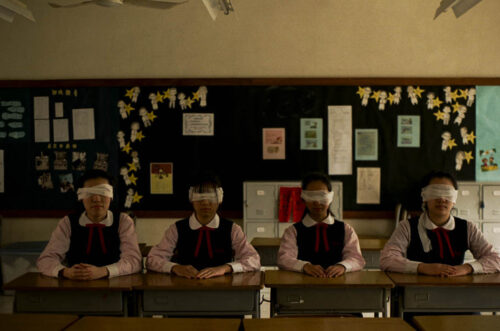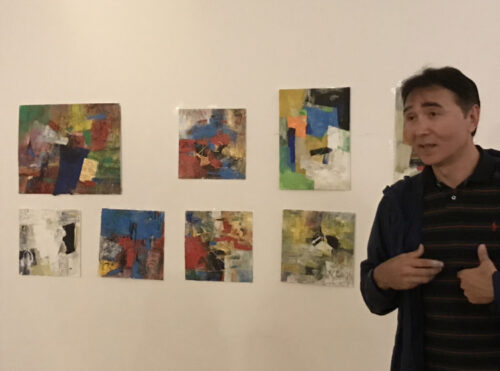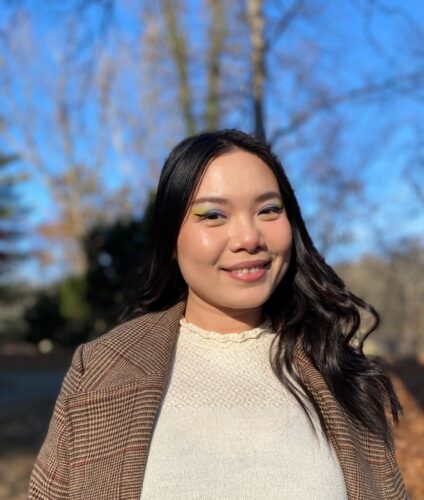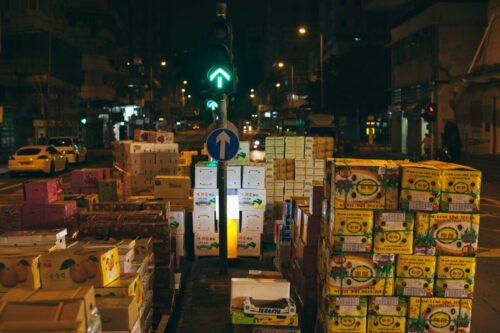‘China Dream’: Photographing Chinese cities and Chinese identity
"My photos always contain elements of contradiction. There’s always a warmth and a coldness, as well as different layers and strata to my understanding of the image."

I first encountered photographer Teresa Eng’s work at a store in upstate New York. Her most recent collection, China Dream, stood out among the more typical flash photography books and kitschy niche-content zines that are so en vogue. Her work had a quiet and distinct presence with a dual effect: of seeming to capture complex forms simply — like a confident painter’s brush stroke — as well as capturing simple entities in interesting and surprising ways, which is a perfect method when dealing with a country as contradictory and vast as China. What emerges from her book is an ode to the often overlooked pieces of the country that make it so uniquely beautiful.
China and its people have been in the news an awful lot recently, as everything from carriers of COVID-19 to symbols of dystopian economics, politics, and even lockdown structures. Eng’s photos lack any of the anthropological fixations or that glossy journalistic detachment that dominates the media, and instead are imbued with a sense of peaceful wonder.
Eng, who was born in Vancouver, currently lives and works in London. Her work explores change through personal histories, and has been featured in The New Yorker, Guardian, Financial Times, and Vogue Italia, among other publications. I had the opportunity to virtually interview her about her work and practice. Our conversation has been edited for length and clarity.
Catherine Zauhar: What is the main mantra of your photography practice?
Teresa Eng: Being curious and questioning everything.
How do you think that’s different from investigating?
That’s an interesting question. What do you think?
I guess for me, an investigation leads to an answer.
Yeah, for me it’s only questions. Questioning photography. Questioning opinions. I don’t believe there’s ever a definitive answer to convey the complexity of the world. My photos always contain elements of contradiction. There’s always a warmth and a coldness, as well as different layers and strata to my understanding of the image.
What is the biggest difference for you between photographing China vs. other countries and places? Are there atmospheric shifts or acute differences you’d like to speak on?
I find Chinese cities more interesting to photograph because you find such extremes there. It’s a mix of futuristic buildings and Chinese gardens with Communist utilitarianism. Modern Chinese culture is interesting because it’s in a state of transition, it’s a place that’s in between. I also think it’s unique because you can find pockets of nature, places where it can still grow and take over.
That’s something that feels very Asian to me. In the Asian countries I’ve been to, there’s not such a clear divide between what is a space for nature and what is a space for people. I wanted to ask you about the reconstructions you were interested in exploring.
I remember passing by the town of Shangri-la, which was mythologized as paradise on Earth by James Hilton in the ’30s. It was in the midst of being rebuilt after a fire destroyed the town. On further research, I found out that the town was a former frontier outpost in the ’80s. So Shangri-la was being reconstructed again to look like an ancient town for the purpose of tourism.
I don’t know where else could you go where there could be reconstructed ancient villages that pop up out of nowhere? There are layers to that history. Because when you’re recreating history, it’s not the same thing as just that history itself. It has the flavor of today, so it creates this new form of culture.
I’m interested in this idea of reconstruction because I feel like there’s a parallel to my parents’ experience of being immigrants to Canada. With immigration, there’s the feeling of starting all over again with learning a foreign language and adjusting to culture shock, the climate and local bureaucracy. All while wanting to maintain a sense of one’s own culture and identity. So you end up doing things in your own way as best you can.
Many of your photos have a lovely gauziness to them, reminiscent of a Wang Kar-Wai or early Sofia Coppola film. Do you feel like your photography of China tries to romanticize the country? And on that note: is beauty a way to reconcile with history, or do you think that it can obscure truths?
The way I see it comes from being a woman and also a first-generation Chinese Canadian.
I do gravitate towards beauty, especially if they’re in unexpected places. To me, a construction site and debris is far more visually interesting than an 18th golden monument. I’ve always been attracted to smaller details and places that are overlooked. If you’re able to pay attention to these things, you’ll see a different type of story about society and culture.
The softness in my images is due to the constraints of using analogue cameras. When I’m working with low light conditions, I need to be still while hand-holding my camera. The haziness of the images was influenced by when I arrived into the city of Chongqing in winter and drove into what looked like a dust bowl during dry season
Your photography practice requires a lot of patience. How do you maintain that diligence?
I’m attracted to nuance and complexity. I find that it requires time and multiple visits to see all those layers and changes.
As I get older, I think more about the long game. I’m more attracted to photographers who work in documentary. The work they make sometimes acts as a time capsule of a place that no longer exists.
Also having time to do something at one’s own pace is a luxury that one doesn’t have when doing editorial or commercial work where you’re bound by quick turnarounds.
For me, photography is about a process of rediscovery and re-examination of a subject. You take the photo with a certain experience in mind, and then later in the dark room or editing process you see new facets of the image. Does this resonate with you, and if so, what is that experience like for you? Is there a specific image that comes to mind when thinking on this phenomenon, and if so, could we have the story behind it?
It does resonate with me. There are so many steps involved with image-making and making a book or an exhibition.
When I go out in the street to photograph, I try to do it without any preconceived notions. Then there’s the waiting that is involved while the film is processed. Once I see the scans, I need some time to sit with them and imagine what colors and tones I want to create in the darkroom.
With making a book or exhibition, it’s about having the images in conversation, seeing how they relate to each other or editing images that don’t work.
Who are some of your inspirations within Chinese arts communities?
Writers: Vanessa Hua and Yiyun Li. Artists: Song Dong, Zhang Kechun, Jessica Chou, Xiaoxiao Xu.
Do you feel like you’re “more Chinese” after traveling to China? Did you feel like the country brought out a different side of you as a person and/or as an artist? If so, how?
I don’t think I felt more Chinese after traveling to China. If anything, I learned to accept the feeling of being in between cultures wherever I am. I’ll always look Chinese but not be “Chinese” enough, since I’m not fluent in the language. Nor will I be considered Western enough in Asia or Europe because I look Chinese.
While I was in China I kept thinking about what my life would be like if I’d grown up there. It was an interesting way to contextualize my photographs. That was another way of questioning. Questioning the self.
My photos are also about finding a moment of stillness within the chaos and not getting overwhelmed. It was about locating myself in China, because you can so easily get lost in the scope. It’s such a big country filled with massive buildings and structures.
What’s up next for you?
I’m looking to make my Self/Portrait series about Chinese selfie culture into an NFT. The fact that the series uses analogue photography to capture a digital experience and then transforming that analogue image into a digital form feels like the right container for them.
What were you drawn to with Chinese youth/selfie culture?
It was partly about being in awe of this generation who grew up in a more prosperous environment compared to their parents and grandparents and also thinking about how much technology is woven into our lives. I wanted to capture a state of transition of adolescents and young adults who were caught in this intersection of technology while navigating a rapidly evolving city and the impact of social media platforms.
Where can people see your work/buy your book?
China Dream recently exhibited at SFO museum in San Francisco. The book is available in the U.S. via Citizen Editions and in Europe via Skinnerboox.














